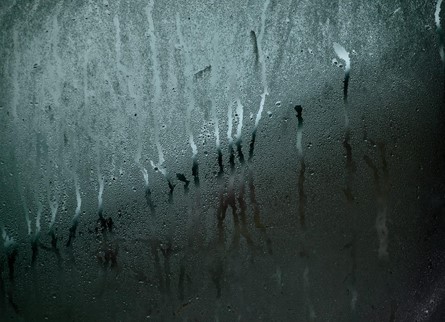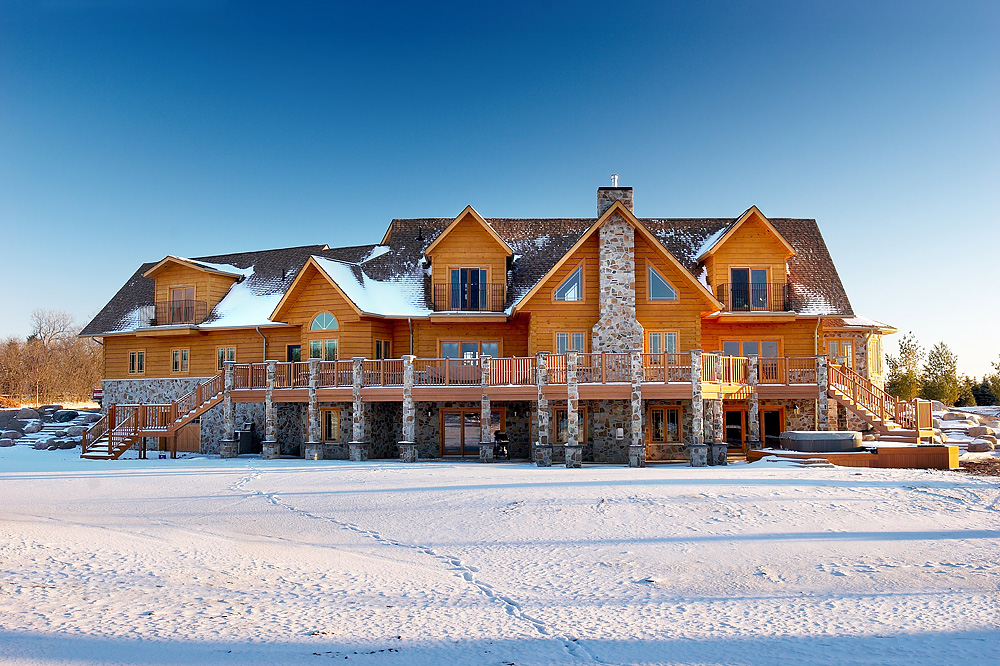Summer is ending, which means that cooler days are ahead. While this means sweaters and hot chocolate for us, it means more stress on your home, especially on your windows and doors.
Check-ups on your home’s exterior are important every season, but winter preparation could be the most critical time of year for the seasonal upkeep of your home. Continuing to check on your exterior, appliances, heating and cooling, plumbing, security, and electrical systems will help prevent breakdowns, save money, and keep your home looking its best this coming winter season.
Some key areas to focus on are windows and doors, as your home’s insulation is directly impacted by their integrity, which in turn affects how you keep yourself warm. Now is a great time to take care of some preparations to make sure your home is in tip-top shape and ready to handle the winter ahead.
There are typical winter window and door issues that rear their heads every year, but with the right planning, you can prevent them. If you’re unsure your home is adequately prepared, we here at Golden Windows in Kitchener are always available for advice and guidance.
Problems To Avoid with Preparation
Several issues that go unnoticed when it’s warm only become apparent when the winter weather arrives. Identifying and fixing these issues now can save you time, money, and energy down the road.
Too Much or Too Little Humidity
There are some common winter window problems that pop up on a yearly basis, and one of those is humidity. Humidity is the amount of water vapour in the air, and at this time of the year, humidity is often either too low or too high.
When your humidity levels are low, it means the air in your home will be dry. A lack of adequate moisture can cause pains such as dry nose, dry throat, dry skin, and increased risk of catching a cold. But dryness can also affect your home. Wood and drywall can be damaged by low humidity levels, which can cause your wood floors to shrink.
On the other end of the spectrum, when humidity levels are too high in your home, the increased moisture can also cause a range of problems. These can include stained ceilings and walls, peeling paint and wallpaper and providing a nasty breeding ground for mould, rot and insects such as termites and cockroaches.
Try to find a happy medium with humidity levels. Levels that are too high or too low can cause problems for yourself and your home. A comfortable range for most people tends to be between 30-40 per cent. Find more information about the correct levels of humidity in your home here.
Frame Rot
When wooden window frames stay wet over long periods, rot can develop within the wood. This increases the amount of shrinking, expansion, and warping that occurs as temperatures change and weakens the frame. Frame rot can also result in your wooden window frame splitting or in a pest infestation that could affect your whole home. The affected wood has to be entirely removed and replaced, so it’s best to avoid letting the problem get this far.
Ice Obstruction
We never really know what kind of winter we’ll get, but whether it’s a massive ice storm or just regular overnight freezing, your windows can be damaged just the same. If your windows are regularly collecting condensation, freezing, and especially if they’re consistently collecting ice, that could be a sign of a broken seal. A broken seal in your window means air is passing through, you’re losing energy, and your appliances might be working double time.

Fall Maintenance for Winter Windows
Now that we’ve identified some of the critical issues we’re looking to avoid, let’s discuss what you can do to properly care for and maintain your windows in the fall to have a trouble-free winter.
Cleaning
It might not seem like it would have a significant impact, but it’s incredible how simple window maintenance and cleaning can have such a massive impact on the lifespan of your windows. Plus, giving your windows a good clean is an excellent time to inspect some of the other things we’ve discussed here. Keep these tips in mind:
- Always use mild soap and water to clean the vinyl and clad surfaces of your windows.
- Clean the operating hardware, hinges and tracks biannually at minimum. Lubricate the hardware with a light oil or silicone spray.
- Apply automotive paste wax to your aluminum frames to maintain their bright luster.
- Avoid abrasive materials and harsh cleaners when cleaning the glass. Instead, use microfiber cloths and a mild mixture of dish soap and water.
By spending a few hours cleaning your windows properly, you’ll get many years of worry-free use from them.
Reduce Condensation
As we noted earlier, moisture is a primary cause of many issues that pop up with windows in the winter. The moisture in the air turns into condensation when it comes into contact with a surface or object that has a lower surface temperature than the other surfaces in your home.
To help prevent excess condensation, follow these simple steps:
- Remove interior screens on the windows during the winter months.
- Improve air circulation to keep the warm air moving.
- Open windows slightly throughout your home for a short time each day during winter months to allow humid air to escape and for drier air to enter.
- Keep heat registers located in front of windows unobstructed and clear.
- Consider adding ventilation fans in high humidity areas like the laundry room, kitchen, and bathrooms.
- Open blinds, draperies, interior shutters during the night to allow air to circulate near the glass surfaces.
- Always vent your dryers, stovetop hood fans and any gas appliances to outside.
- Turn off furnace humidifiers.
- Open fireplace damper to allow moist air to escape.
- Consider running a dehumidifier.
- Install an in-house air exchanger system like an HRV or GRV.
- Turn on your furnace fan only to circulate air in the home.
Even though we’ve talked about reducing the condensation in your home, don’t be alarmed if you do notice some condensation. It’s a natural occurrence, and even more so in homes that have adequately sealed windows and doors, as a well-sealed home will trap in more humidity. It’s not all about eliminating that moisture, but managing it.

Insulation
A cozy vibe in your home is one of the best parts of winter, but a chill in your home can take away from that and drive up your energy bill. According to the EPA, homeowners can save an average of 15 per cent on heating and cooling costs by air sealing their homes and adding insulation while also making their living space more comfortable.
If you notice drafts or intermittent cold spots intruding from pockets around your doors and windows, then cracks and gaps are likely the culprits. If you have storm windows and doors, install them. Add or replace worn weather stripping around the doors and windows and caulk any gaps. If doorstops are worn, replace them.
Check your home for cold air leaks. On the exterior of your house, go over all areas where different building materials meet. This includes all exterior corners, where siding and chimneys meet, outdoor water faucets, and any places where the foundation and the bottom of exterior brick or siding meet.
From inside your house, look for cracks and gaps around areas like:
- Electrical outlets.
- Switch plates.
- Door and window frames.
- Electrical and gas service entrances.
- Weather stripping around doors.
- Fireplace dampers.
- Attic hatches.
- Wall-or window-mounted air conditioners.
- Cable TV and phone lines.
- Where dryer vents pass through walls.
- Vents and fans.
The high-tech approach to identify leaks is to use a laser infrared thermal gun to detect cold drafts. For low-tech methods, you can use your hand to feel for cold air, a candle to see if the light dances or incense to see if the smoke blows into the house or is sucked out.
Use good quality caulking wherever you find leaks and ensure that the caulking forms a proper seal against the glass. If any prior caulking is damaged, re-caulk your window. If you have previously caulked and there is still a draft, the window may be beyond saving.
Keep in mind that there are many different kinds of caulks, so choose the right one for the task at hand.
Thermal Curtains
A good choice of window coverings can provide insulation for your windows and patio doors. When shopping, look for the R-value of the window treatment, which refers to the insulating value. When an R-value is higher, the material is more insulating.
It’s surprising how much insulation can be provided by curtains, drapes, shades and even mini blinds. Make sure to keep window coverings drawn at night and when you’re away in order to conserve heat in your home.
Although the fabric used to create thermal curtains is crucial to how well it insulates the windows in your home, you also need to consider other factors:
Type
Thermal curtains are available as standard classic curtains, Roman shades, hobbled shades, balloon shades, and side-draw shades, just to name a few. Thermal curtains consist of insulating padding sandwiched between material suspended by a curtain rod that prevents air from passing into the room from the window.
Size
The size of the curtain depends on the size of the window and the desired style you want to achieve. Thermal curtains typically come in lengths of 63 inches, 84 inches, 95 inches, 108 inches, and 120 inches, and for the curtains to properly insulate, they should be large enough to cover the entire window casing. Beyond that, the size you want depends on the look you’re trying to achieve. If you’re using blinds or shades, they must fit tightly inside the window casing to prevent air from leaking around the edges of the blinds.
Fabric
Like standard curtains, insulated curtains come in a wide variety of fabrics, including cotton, polyester, silk, microfiber, and even velvet. Polyester and microfiber are the most effective fabrics for thermal curtains as they resist moisture, which can build up in the air trapped between the curtain and the windowpane.
Aesthetic
When choosing thermal curtains, be sure to select styles that complement your existing decor and find the right length to elevate the look of your window. While insulated curtains may make you think of tacky window treatments found in cheap hotel rooms, they come in a wide variety of stylish colours and patterns.
Noise Reduction
The thick layers of material in an insulating curtain not only prevent heat loss in your home but also absorb sound waves. This works both ways, as you can mute the sound of your neighbour’s barking dog or screaming children while also muffling your loud music. Thermal curtains can reduce the noise in your home by as much as 10 decibels.
Insulation
Thermal curtains use multiple layers of material to effectively block the cold outside air from seeping inside your home. Created with four separate layers, insulated curtains are constructed with a core layer of high-density foam to stop frosty air from coming indoors and prevent heated inside air from being cooled or escaping outside. Insulated curtains also contain a vapor barrier coating, a decorative outer covering and a reflective film layer, which also helps to deflect heat back into the room.
Cleaning instructions
Depending on the style and fabric, maintaining your thermal insulated curtains can be as simple as tossing the curtains in the washer or as complicated as taking them to the dry cleaner. For proper care, it is best to follow the manufacturer’s instructions for maintenance.
There are a variety of benefits to owning thermal curtains. With their multiple layers of fabric, these curtains provide an extra layer of insulation for your windows and can save you money on your energy bills.
The same triple-layer design that keeps cold air out and warm air in (and keeps the heat out in the summer) also does an excellent job of reducing outdoor noises, helping to create a quieter, more peaceful environment inside your home.

How To Tell if You Need Window or Door Replacements for Winter
Homes grow older, as does everything inside and outside of it. Windows and doors typically have a long lifespan, and as we’ve said, proper maintenance, cleaning, and care can help prolong their lifespans. That said, all windows and doors will eventually need replacing. The good news is, there are often easy signs to tell when you should replace your windows and doors.
If you’ve followed our tips for insulating and caulking and still feel a draught, that’s a strong sign you need new windows or doors. If your window frames and door have begun to warp and crack, this is a sign that they’re no longer functioning as they should. Significant signs of damage can also be a signal that it’s time for an exterior door replacement.
If windows frames are cracking or if you can see condensation build-up in-between the panes that you can’t wipe away, or if your windows can’t keep the neighbourhood noise out, these are all signs it might be time for an update.
If you do need or want new windows and you’re looking to prevent some of the issues we’ve outlined here, you should consider triple glazed windows. After all, reduced condensation and having a high insulation performance are arguably the main reasons why people choose a triple glazed window. However, there are many other benefits to these, including reduced noise and increased security.
How Golden Windows Can Help
You might be thinking that if you haven’t replaced your windows or doors by the fall, the season has passed, and you’ll just have to wait until spring. You’ll be happy to know, this is not the case at all.
Fall and winter window and door installations are perfectly normal. If you’re worried about the cold air rushing into your home, consult with an installation company and be sure to ask them about their procedures for cold weather installations.
Golden Windows has a selection of windows to meet your needs for the upcoming cold weather. Don’t wait until you’re wondering why it’s so cold despite the heat being on or until your energy bill skyrockets.

